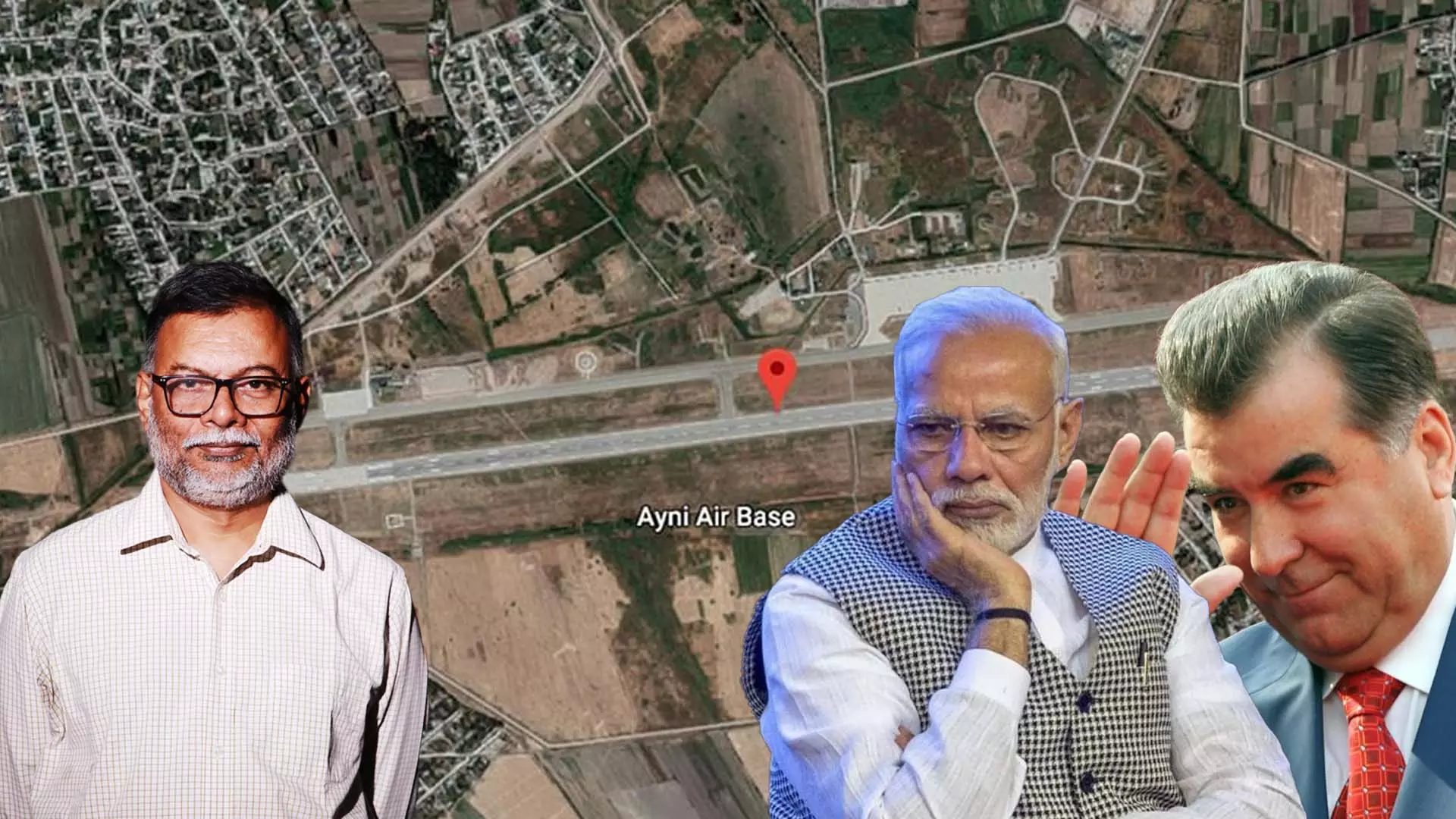
Why India pulled out of its only overseas airbase in Tajikistan
The Federal’s Consulting Editor KS Dakshinamurthy explains why India exited the Ayni airbase and what it reveals about its foreign policy challenges

India’s quiet exit from the Ayni airbase in Tajikistan — its only overseas military facility — has sparked debate over the strategic and diplomatic implications of the move. The base, located near Afghanistan, Pakistan, and China, was once seen as a key asset in India’s regional posture. In this interview, The Federal’s Consulting Editor KS Dakshinamurthy breaks down the base’s significance, the geopolitical forces that shaped India’s withdrawal, and what it signals for India’s foreign policy.
What was the significance of the Ayni airbase, and how did India come to establish it?
The Ayni airbase was India’s only full-fledged overseas military base. India doesn’t have similar installations elsewhere, except for a few temporary arrangements. Tajikistan’s geography makes it particularly strategic — it lies to the west of Pakistan, north of Afghanistan, and close to China’s Xinjiang province.
Russia also maintains a large military presence in Tajikistan, which is part of the Moscow-led Collective Security Treaty Organisation (CSTO). After the 9/11 attacks, the global political landscape shifted, and India was able to secure access to the base. Neither the United States nor Russia objected at the time.
The base developed rapidly, especially under the Vajpayee government. It lies just 20 km from the Wakhan Corridor — which separates Tajikistan and Pakistan — and around 600 km from Pakistan-occupied Kashmir. India built a 3.2-km-long runway and stationed Sukhoi-30 fighter jets and about 200 Air Force personnel there.
Historically, the base also played a role during Afghanistan’s turbulent 1990s. When Northern Alliance leader Ahmad Shah Massoud was attacked just before 9/11, he was treated at the Indian-run hospital at Ayni, though he did not survive. Later, during the 2021 Taliban takeover, India used the base to evacuate its citizens from Afghanistan. Strategically, the Ayni airbase was something every major power would have wanted, given Tajikistan’s crucial location.
Reports suggest India spent around $70–100 million on the airbase. Why did Tajikistan not renew India’s lease?
It’s very unlikely that India vacated the base voluntarily. The more plausible explanation is that the Tajik government declined to renew the lease, probably under external pressure. Tajikistan is the poorest country in Central Asia and depends heavily on Russia for security and on China for economic support.
Given the shifting global power equations, it’s likely that both Russia and China influenced Tajikistan’s decision. Between 2000 and 2021, India drew closer to the US, which unsettled Russia. During Prime Minister Narendra Modi’s first term, India enjoyed a visible bonhomie with Donald Trump, who was then serving his first term as US President, further straining relations with Moscow.
Meanwhile, China and Russia grew closer, and India’s relations with China sharply deteriorated after the 2020 Galwan clash. In this context, both Russia and China may have seen India as drifting away from their strategic orbit and nudged Tajikistan to end India’s access to the base.
Is this a setback for India’s foreign policy, as some critics have claimed?
Yes, it does reflect limitations in India’s foreign policy. India’s diplomacy has long been about balancing relations among three big powers — the US, Russia, and China — but it’s increasingly difficult to maintain equidistance.
For example, under US pressure during Trump’s presidency, India reduced its oil imports from Russia. This hurt Moscow and affected India-Russia relations. Simultaneously, Russia’s dependence on China has deepened due to the Ukraine war, while China remains closely aligned with Pakistan.
As a result, India finds itself constrained on multiple fronts. It’s unable to act independently or take policy initiatives that project leadership. This situation — visible in the Ayni exit — suggests a kind of paralysis in India’s foreign policy, where it reacts to developments rather than driving them.
From a South Asian perspective, what does India’s exit from Ayni signify?
It’s both a strategic and symbolic setback. India’s presence at Ayni, west of Pakistan, theoretically allowed it to open a western front against Pakistan if needed. That possibility alone added pressure on Islamabad.
If India had still been operating from Ayni during operations like Sindhu earlier this year, it could have leveraged the base for greater strategic advantage. Instead, vacating it effectively eased Pakistan’s security concerns.
More broadly, India’s inability to retain or expand such overseas bases shows the fragility of its regional relationships. Its engagement with neighbours like the Maldives also fluctuates with political changes, making its regional influence inconsistent.
Ultimately, the Ayni withdrawal underscores gaps in India’s strategic planning and the urgent need for a more coherent foreign policy that goes beyond tactical balancing acts.
The content above has been transcribed from video using a fine-tuned AI model. To ensure accuracy, quality, and editorial integrity, we employ a Human-In-The-Loop (HITL) process. While AI assists in creating the initial draft, our experienced editorial team carefully reviews, edits, and refines the content before publication. At The Federal, we combine the efficiency of AI with the expertise of human editors to deliver reliable and insightful journalism.

